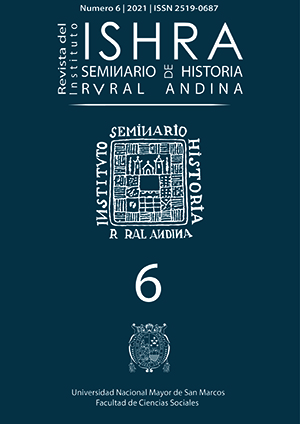The uses of ethnohistory: Cañaris and Incas in the Ecuadorian and Peruvian national construction
DOI:
https://doi.org/10.15381/ishra.n6.20985Keywords:
Cañaris, Incas, nation-state, historiography, ethnohistoryAbstract
After Independence, the Andean nation states were built on the basis of colonial cartography. In the old Audience of Quito (now Ecuador), Juan de Velasco’s work constitutes a significant base for identity, linked to a succession of mythological events and dynastic disputes within the Quito-Puruhá confederation. In Peru there is an appropriation of the Inca legacy by the “Creole” elites and, in both cases, the historiography that exalts the pre-Hispanic history coexists with the marginality of the indigenous people. The incorporation of the Cañaris into the Ecuadorian national historiography reveals multiple challenges. This people, massively affected by the mitma transfers during the Inca period, was not part of the Quito-Puruhá confederation (pre-Hispanic base of Ecuadorian identity); rather, they opposed it. Also, the tendency to identify Atahualpa as a “proto-Ecuadorian” Inca contrasts with the support of the Cañaris to Huáscar, conceived as a “Peruvian Inca”. This particularity, and the support of some sectors of Cañaris (local and mitmas) to the Hispanic colonial endeavor, can be perceived as unfavorable for both national historiographies. The selective appropriation of the past, republican oppositions based on presumed pre-Hispanic disagreements, as well as an ethnocentric reading of history (“real legitimacy”, dynasties, controversial cartography, imaginary of civilization), characterize the uses of ethnohistory in the elaboration of republican projects in Ecuador and Peru.
Downloads
Downloads
Published
Issue
Section
License
Copyright (c) 2021 Mirko Solari

This work is licensed under a Creative Commons Attribution 4.0 International License.
AUTHORS RETAIN THEIR RIGHTS:
a. Authors retain their trade mark rights and patent, and also on any process or procedure described in the article.
b. Authors retain their right to share, copy, distribute, perform and publicly communicate their article (eg, to place their article in an institutional repository or publish it in a book), with an acknowledgment of its initial publication in the ISHRA, Revista del Instituto Seminario de Historia Rural Andina.
c. Authors retain theirs right to make a subsequent publication of their work, to use the article or any part thereof (eg a compilation of his papers, lecture notes, thesis, or a book), always indicating the source of publication (the originator of the work, journal, volume, number and date).






